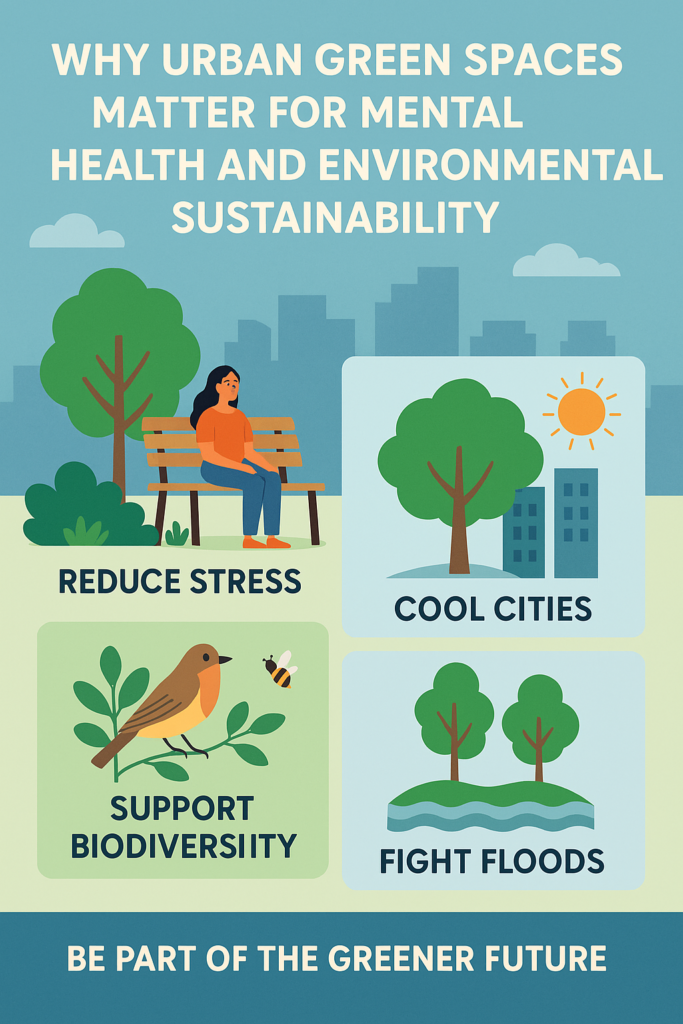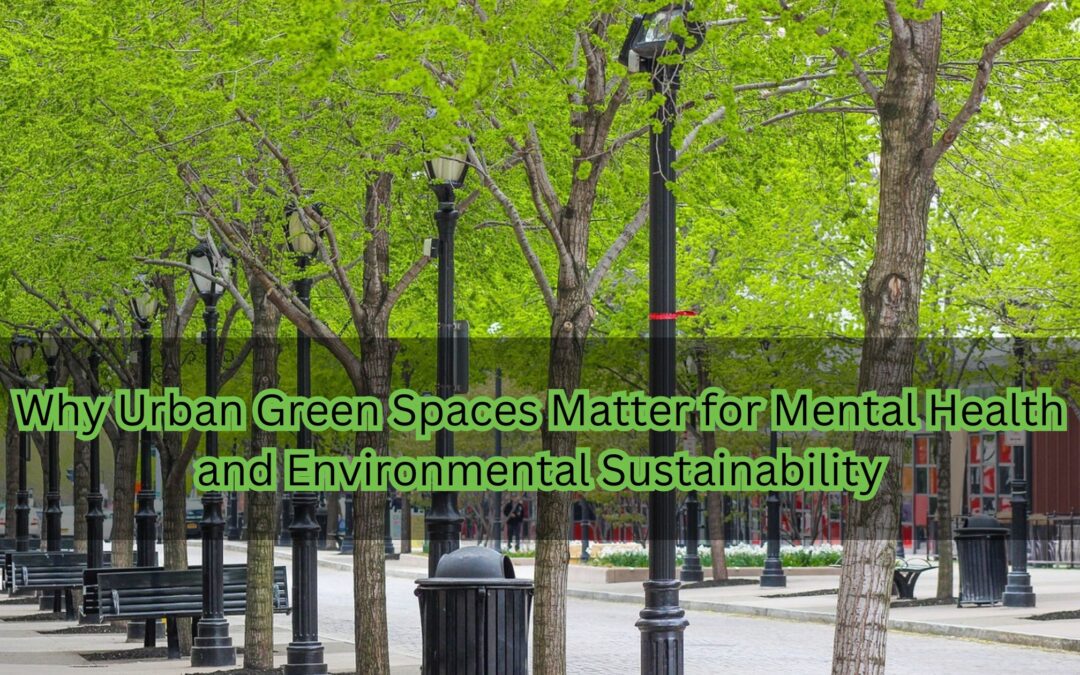Let’s talk about something we all feel but don’t often say out loud—city life can be exhausting. It’s loud, busy, and at times overwhelming. As urban areas grow and the planet warms, we need more than just concrete and cars. That’s where urban green spaces come in. These are parks, rooftop gardens, greenways, and even small pockets of trees that bring nature back into our cities. They’re not just nice to look at—they’re essential for our mental health and environmental sustainability.
Urban Green Spaces Reduce Stress
Have you ever walked through a park and just felt… better? You’re not imagining it. Research shows that being around green spaces helps reduce stress, anxiety, and depression. Nature has a way of calming our minds. It slows us down. Whether it’s kids playing outside, elderly folks strolling on a tree-lined path, or just sitting quietly under a shady tree—it all helps us feel more connected and less overwhelmed.
And for children, green play areas do more than just offer fun—they boost cognitive development and emotional regulation. That means better focus, behavior, and mental resilience.
Environmental Sustainability Starts with Clean Air and Cool Cities
Here’s something many people forget—plants are natural air filters. Trees and shrubs pull carbon dioxide and other pollutants from the air, making it easier for us to breathe. And guess what? They also help cool down our cities. Urban areas are often hotter than nearby rural regions, but green spaces offer shade and release moisture, cutting temperatures and reducing energy needs.
If you want to dive deeper into solutions like this, we invite you to explore climate-smart living ideas at EAT Community.

Urban Green Spaces Support Biodiversity
Green spaces also give homes to more than just people. Birds, butterflies, bees, and small animals all benefit from urban greenery. Even small patches can act as mini-wildlife corridors, connecting ecosystems across a city. And when nature thrives, we thrive. Watching birds or hearing crickets can remind us we’re part of a bigger, living world.
Want to know why biodiversity matters? Check out this resource from the UN on biodiversity and ecosystems.
Fighting Floods with Natural Solutions
Green spaces reduce flooding too. Instead of rainwater rushing down paved roads into sewers, trees and soil soak it up naturally. This protects homes, roads, and water systems—and it also improves water quality by filtering pollutants before they reach rivers and lakes.
That’s a pretty amazing benefit, just from planting more trees and grass.
Equal Access to Urban Green Spaces is Key
Not all neighborhoods have the same access to parks or nature. That’s a problem. Everyone deserves green space—especially underserved communities where stress, pollution, and health problems are often worse. Cities need to plan smart and make sure no one is left behind when it comes to enjoying nature.
Let’s Build Cities That Heal and Sustain
Green spaces aren’t luxuries. They’re lifelines. They help us stay healthier, happier, and more connected. They cool our cities, clean our air, absorb stormwater, and bring wildlife back. In short, they help us build better cities.
Call to Action: Be Part of the Greener Future
It’s time to rethink what makes a great city. Support green infrastructure projects in your area. Plant a tree, speak up for more public parks, or join a local urban gardening group.
Want to learn more about how to live sustainably and support climate action?
Visit EAT Community.com and become part of the movement.
References:
- The Indispensable Role of Urban Forests in Enhancing City Life
- How To Fight Depression Without Medication
- Green Infrastructure: The Key to Urban Resilience and Sustainability
- World Health Organization – Urban Green Spaces and Health
- National Recreation and Park Association – Benefits of Urban Parks
- United Nations – Biodiversity and Ecosystems
- US EPA – Green Infrastructure
- Mental Health Foundation UK – Nature and Mental Health



